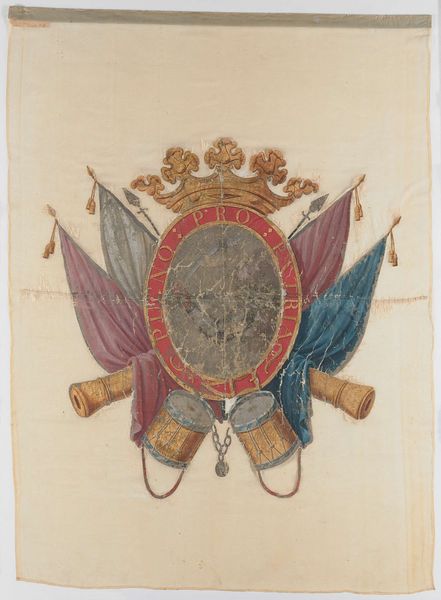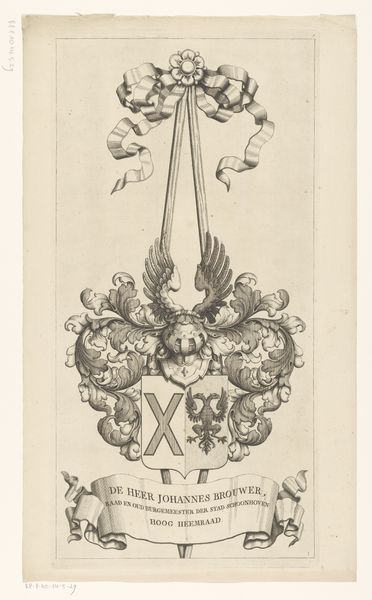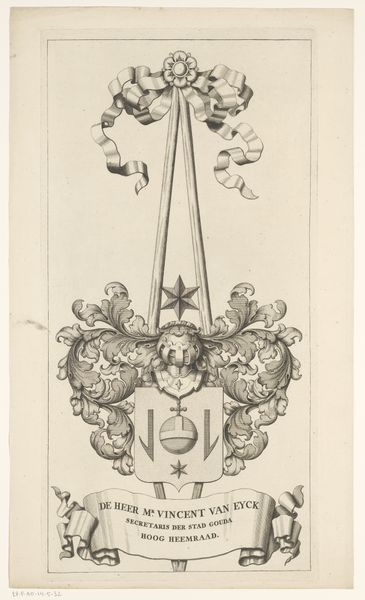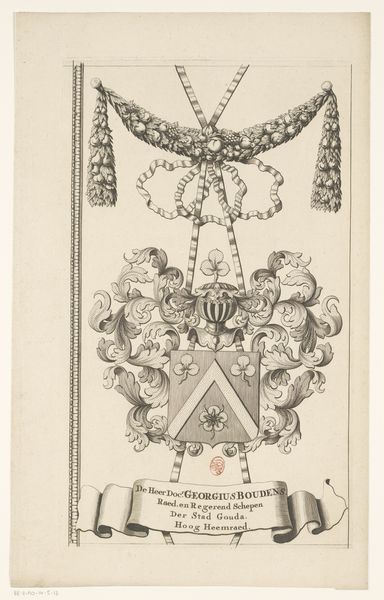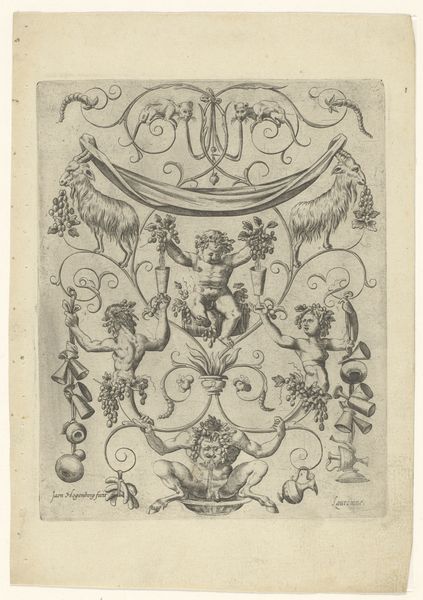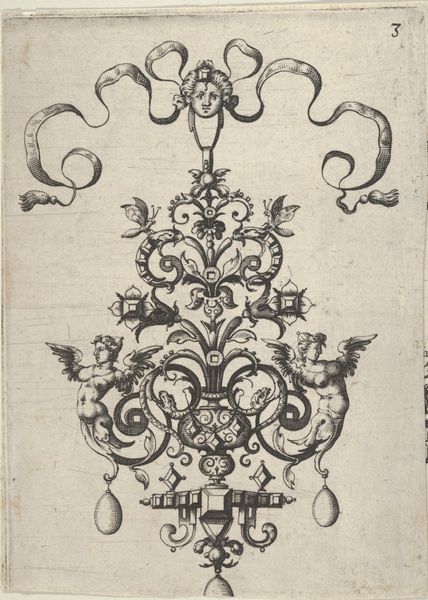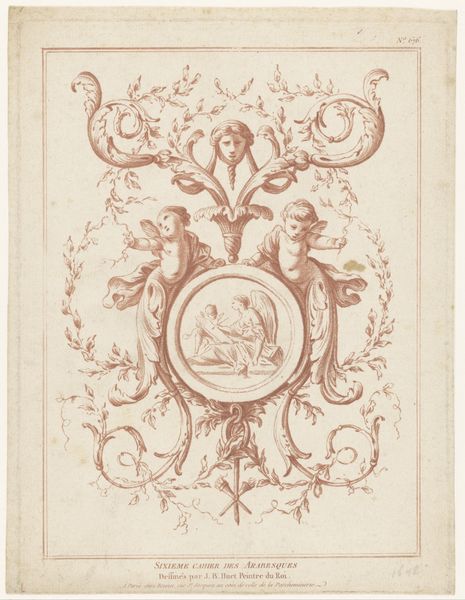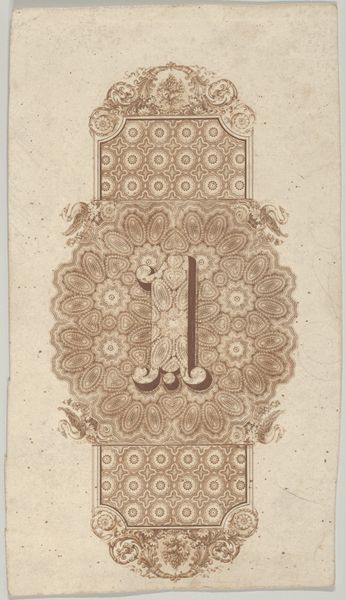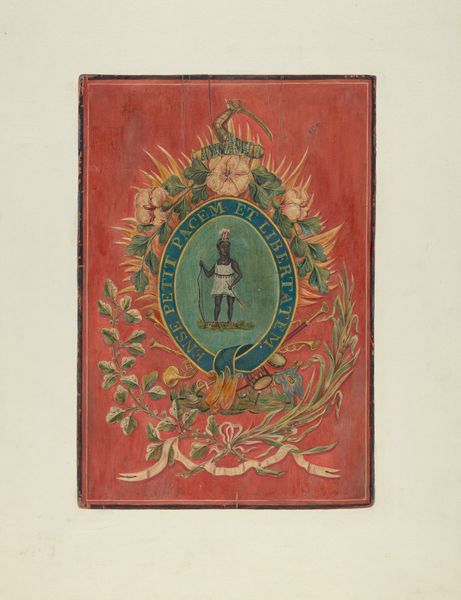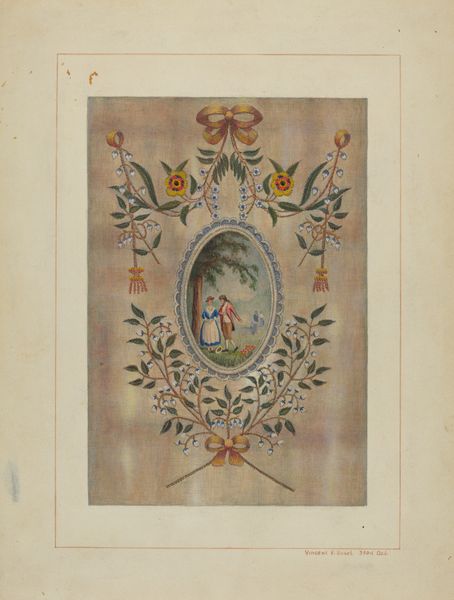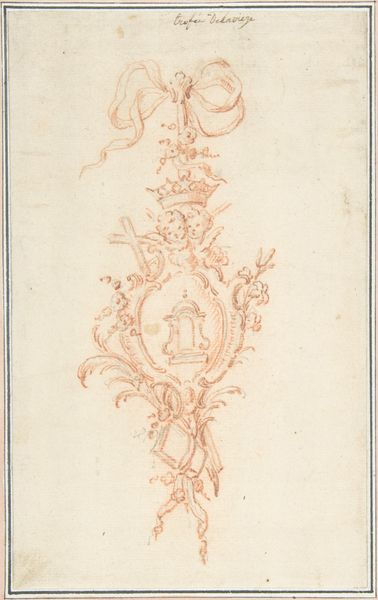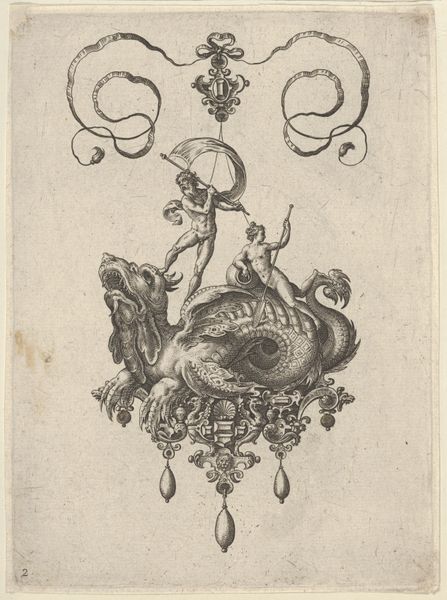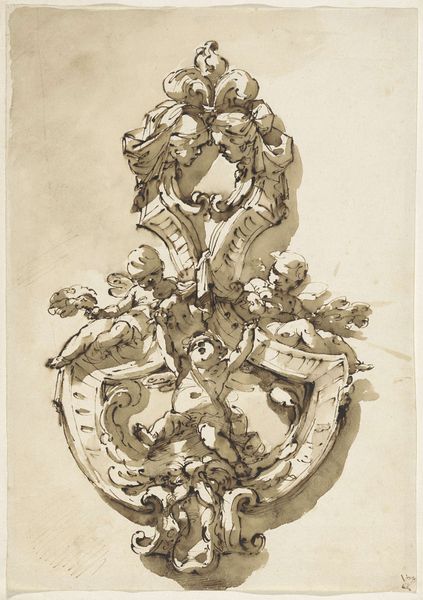
drawing, tempera, painting, watercolor
#
drawing
#
water colours
#
tempera
#
painting
#
watercolor
#
decorative-art
#
decorative art
Dimensions: overall: 72.3 x 54.8 cm (28 7/16 x 21 9/16 in.)
Copyright: National Gallery of Art: CC0 1.0
Curator: Here we have a piece titled "Free Hand Decorated Wall," believed to have been created around 1940, using tempera and watercolor. It offers an interesting lens through which to examine the visual language of American identity during a turbulent era. Editor: It has a striking symmetry and simplified color palette. I immediately notice the interplay between the dark, almost gothic, line work of the wreath and the heraldic eagle at its center. Curator: Indeed. The eagle, a prominent symbol of the United States, is surrounded by the words "Federal Union", calling into question, given the historical context, who exactly that "Union" served and protected at the time. It raises questions of inclusion, especially regarding marginalized communities. Editor: I see it more as an exercise in balance and the formal use of repeated elements. Note the stylized, almost folksy, rendering of the eagle, how its form echoes the surrounding wreath, establishing a rhythmic visual unity, connecting naturalistic imagery with symbols of state. Curator: But even those formal elements were deployed in service of an existing ideology! These design choices speak volumes about power structures inherent in the visual landscape and invite questions about cultural memory and national mythology, not to mention potential critiques of nationalism itself. Editor: Perhaps, but the charm comes from the limitations in technique. It gives the piece an artisanal quality that removes the eagle from its cold, governmental setting. The tempera allows a flatness and light reflection which watercolor usually does not; it is almost innocent. Curator: Innocent? This was created as the United States teetered on the brink of formally entering WWII, during the last years of Jim Crow. To claim this image innocent glosses over very painful historical truths about structural inequality in our nation's visual identity. Editor: Even so, I leave understanding this piece impressed by how well its forms complement its message, giving it an aesthetic, but simplified voice through use of fundamental shapes. Curator: And I'm left with the questions of what “Federal Union” meant for many, and whether national symbols, such as this, can truly represent all segments of our society.
Comments
No comments
Be the first to comment and join the conversation on the ultimate creative platform.
